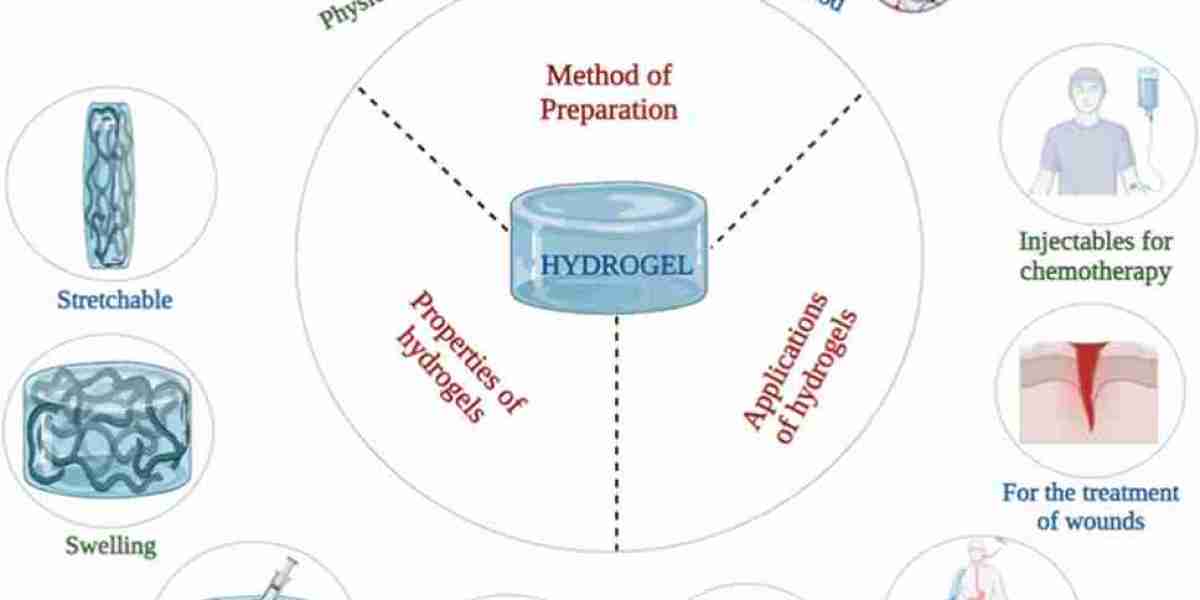The hydrogel-based drug delivery market is influenced by a range of interdependent factors that collectively shape its trajectory. From technological advancements and patient-centric healthcare models to policy regulations and raw material availability, these impacting forces operate at both macro and microeconomic levels. Understanding these variables is essential for stakeholders who aim to navigate this evolving landscape effectively.
Technological Advancements and Material Science Innovation
At the core of hydrogel-based drug delivery is the continuous innovation in polymer science and engineering. The development of “smart” hydrogels—those that respond to external stimuli like pH, temperature, and glucose levels—is a critical factor driving new product pipelines. These adaptive materials have enabled more precise and controlled drug release, allowing therapies to become more targeted and responsive to patient needs.
Moreover, advances in bioconjugation, crosslinking techniques, and nanotechnology have made it possible to integrate hydrogels with bioactive agents, nanoparticles, and gene delivery mechanisms. These technological breakthroughs are not only improving therapeutic efficacy but also opening new frontiers in personalized medicine, making innovation one of the most influential impacting factors in this sector.
Disease Burden and Therapeutic Demand
The increasing prevalence of chronic and non-communicable diseases is another major market driver. Disorders such as cancer, diabetes, and cardiovascular disease require long-term medication and patient adherence—areas where hydrogel-based systems offer compelling advantages. The ability to maintain steady plasma drug concentrations over time and reduce the frequency of administration aligns well with modern therapeutic demands.
As life expectancy increases globally, so does the need for sustainable, non-invasive, and effective delivery systems. This demographic shift is directly contributing to higher demand for advanced drug delivery formats, especially among aging populations who benefit from localized, sustained, and low-maintenance therapeutic solutions.
Healthcare Infrastructure and Access to Innovation
The disparity in healthcare infrastructure across regions plays a defining role in how hydrogel-based drug delivery systems are adopted. Developed countries with strong medical frameworks, robust reimbursement models, and established regulatory systems are quick to incorporate these technologies into standard practice. In contrast, emerging markets may face delays in adoption due to limited access, lack of clinician training, and pricing challenges.
Nonetheless, as global health policies increasingly support innovation and as digital health platforms improve patient engagement, access to hydrogel-based systems is expected to expand. Efforts to simplify supply chains, reduce production costs, and localize manufacturing are also mitigating infrastructure-related constraints, making this an evolving impacting factor.
Cost of Development and Scalability
The economics of hydrogel production and commercialization is a double-edged sword. While hydrogels offer significant clinical benefits, their complex synthesis processes, sterilization requirements, and regulatory demands can elevate development costs. This poses a particular challenge for smaller firms and startups, which may struggle to scale up promising lab-based innovations.
Scalability, therefore, becomes a crucial impacting factor. Companies are increasingly investing in automation, modular manufacturing, and advanced quality control technologies to streamline production and reduce time-to-market. Cost-effective formulations using naturally derived or widely available polymers are also gaining attention for their potential to offer a balance between functionality and affordability.
Regulatory Environment and Approval Pathways
The regulatory landscape plays an integral role in determining the pace at which hydrogel-based drug delivery systems reach the market. Given that these products often involve novel materials or new mechanisms of drug release, they are subject to stringent preclinical and clinical testing. Delays in approval processes can significantly affect launch timelines and investor confidence.
However, increasing familiarity with hydrogel platforms among regulatory bodies such as the FDA and EMA has led to more structured guidance, faster feedback loops, and early-stage consultative support. This maturing ecosystem is gradually easing some of the regulatory burdens, although compliance and safety documentation remain key impacting factors.
Patient Compliance and Physician Acceptance
Patient-centricity is becoming a strategic imperative in healthcare, and hydrogel-based delivery systems are aligned with this trend. Their ability to reduce dosing frequency, minimize side effects, and improve comfort makes them well-suited for patient-friendly treatments. However, broad acceptance still depends on physician endorsement and healthcare provider education.
Physician familiarity with hydrogel mechanisms, application techniques, and safety profiles can significantly influence prescription behavior. As more clinical data becomes available and training programs are introduced, acceptance rates are expected to climb—enhancing the overall market receptivity.
Supply Chain Resilience and Environmental Considerations
Supply chain robustness is another factor influencing the market, especially in light of global disruptions and geopolitical tensions. Secure sourcing of polymers, reagents, and sterilization equipment is essential to maintain consistent production cycles. Furthermore, the growing importance of environmental sustainability is prompting a shift toward biodegradable and eco-friendly hydrogel materials.
Manufacturers that adopt green chemistry principles and sustainable sourcing practices not only gain competitive advantage but also align with rising environmental and regulatory standards, particularly in Europe and North America.
Conclusion
The hydrogel-based drug delivery market is shaped by a multifaceted set of impacting factors, including technological innovation, disease prevalence, regulatory policies, and patient-centric care models. While challenges such as cost and scalability persist, the cumulative effect of these variables is pushing the market toward broader adoption and continuous evolution. For stakeholders to thrive, a strategic focus on aligning with these impacting forces will be essential.


